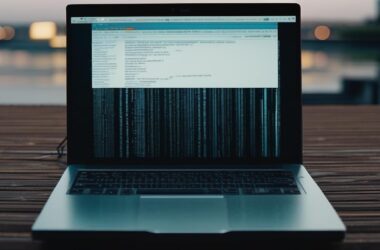There has been a lot of speculation in the past about the long term of NFT tokens. However, as we’ve seen in recent months, the industry has performed admirably.
Virtual currencies are now trying to take advantage of this model by providing new ways for people to invest in a variety of unquantifiable assets such as stocks, bonds, and other securities without owning them (i.e., clearing them through fiat money).
What Is an NFT (Non-Fungible Token)?
NFTs, or non-fungible tokens, are data encryption assets on the blockchain that have unique identifying codes and meta-data that differentiate them from one another. They cannot be bartered or exchanged for equivalency, unlike cryptocurrencies. This is in contrast to fungible tokens, such as digital currencies, which seem to be identical to one another and thus can be used as a medium of exchange.
They’re a great way to digitally reflect tangible assets like property investment and artwork, for example.
NFTs can also be used to eliminate middlemen and connect creatives with audiences or for identity and access management because they are based on blockchains. NFTs can eliminate middlemen, streamline transactions, and access new markets.
What Is the Importance of Non-Fungible Tokens?
Non-fungible tokens are a step forward from the relatively straightforward concept of digital currencies. Modern financial systems include sophisticated trading and lending systems for a variety of asset types, including real estate, borrowing contracts, and artwork.
NFTs are a move forward in the reimagining of this infrastructure because they enable digital representations of physical assets.
To be sure, neither the concept of digital depictions of tangible assets nor the use of unique identifiers is new. These ideas, when merged with the advantages of a tamper-resistant cryptocurrency of smart contracts, become a powerful force for change.
ADVANTAGES
Efficient markets are perhaps the most immediate advantage of NFTs. Converting a physical asset to a digital asset simplifies processes and eliminates middlemen. On a blockchain, NFTs represent physical or digital artwork, removing the need for agents and allowing artists to directly connect with their viewers.
They can also help businesses improve their processes. An NFT for a wine bottle, for example, will make it easier for various actors in the distribution chain to communicate with it and track its provenance, manufacturing, and sale throughout the process.
NFT’s Current and Future Applications in a Variety of Fields
Here are among the most common applications of NFT in various fields:
1. GAMING INDUSTRY
NFT tokens can be used for in-app purchases in most gaming apps. Many NFT enthusiasts who would like to play the games and earn a lot of cryptocurrencies will find these games to be a turning point.
We can expect lots of future changes because the blockchain world is still very young. This includes alterations to the way things are done now.
It’s safe to assume that the NFT market will continue to expand and that it may even change the face of gaming as we understand it. And who knows what might happen? Maybe in a few years, your money invested will be worth a fortune!
2. The Real Estate Industry
Real estate is indeed the asset class in which the most money is invested. NFTs can be used in real estate in a variety of ways. It could be used to make real estate ownership transparent, for starters.
NFTs can also be used to create a new type of crowdfunding that allows investors to profit from their investments in real estate investments such as house construction and rental apartments.
3. MUSICAL INDUSTRY
One of the most important relationships in the music industry is between artists and their fans. The rise of online music streaming services like Spotify and YouTube has made it much easier than ever for music fans to listen to their favourite artists for free.
As a result, musicians have been starting to struggle to monetize their content and maintain their careers. This is where blockchain technology comes in.
4. VIRTUAL REALITY THAT IS HYPER-REALISTIC
A person’s entire set of NFTs would be capable of travelling with them through Hyperrealistic Virtual worlds in this futuristic bitcoin world. Anyone who wished to see these digital tokens could, and they can be used as a portion of an interactive gaming experience.
5. DeFiction
Decentralized financial applications (DeFi) are a relatively new concept. DeFi applications can be used to the downpayment, lend, collect, trade, and more to do with cryptocurrency (and potentially fiat).
Decentralized finance is often misunderstood as “decentralised banking.” It’s not; it’s more akin to Lending Club or Prosper, for example.
NFTs with a composite structure. The ability to create fibreglass NFTs is the most important feature of an NFT in DeFi (C-NFT). Fractional ownership is analogous to composite NFTs. In a pooled ownership model, you own a proportion of an NFT.
Is it wise to invest in NFT?
While accumulating NFTs still necessitates the use of cryptocurrency, there are numerous instances where small investments can yield large returns.
For example, Trevor Jones is a traditional artist who transitioned to crypto art in 2019. EthGirl, digital painters depicting an animatronic collage of the Ethereum logo that reveals a face, will be his first NFT part. The NFT art was sold for 70 Ether (ETH) at the time, which was the closest approximation of $10,000 at the time.
The work of art was appreciated at over $8 million two years later, in 2021, thanks to the NFT hype.
The same standards relate to the worth of an NFT or crypto art as they do to all other assets. The old supply-side law.
Demand rises as the internet world of collectors, purchasers, and investors expand. At the same time, the supply grows as more performers see NFT art as a better choice for their designs.
Rare bits by successful artists, as in the world of traditional art, are the ones most likely to be praised, collected, or bought. One-of-a-kind works are in higher demand than one-of-a-hundred works. The value of these works of art can skyrocket at auction and in supplementary sales.
Over 32,000 individuals have demanded 67,000 NFT works, nearly seven times the number that is available. The sale should bring in $20 million at $2,000 per unit.
NFTs, on either hand, are very appealing to art collectors because they allow you to purchase and invest in both a real revolution and the art itself.
Some assume that NFTs will transform the art world in the same way that Bitcoin (BTC) and Ethereum (ETH) have transformed the financial system.
As with any investment, however, you must conduct thorough research into the NFT market as an investor. Some NFT platforms as well as markets, such as OpenSea, Foundation, Nifty Gateway, and SuperRare, are not as durable and secure as others.








